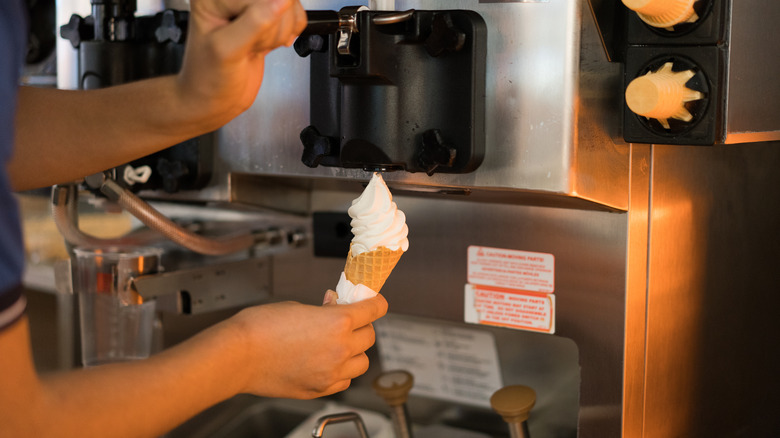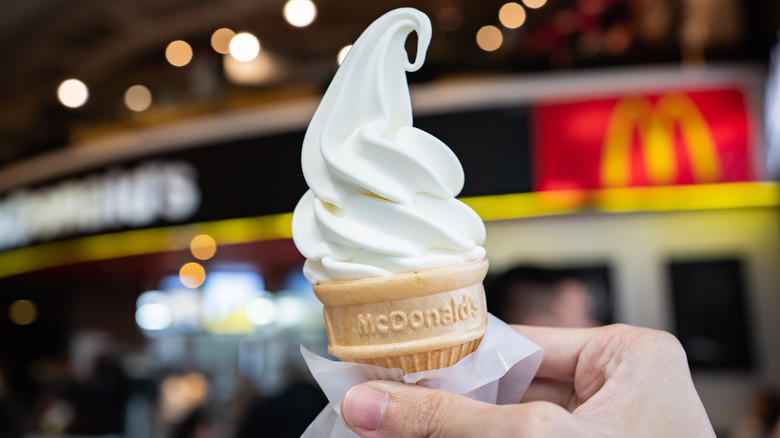This Fast Food Soft Serve Fact Will Have You Thinking Twice Before Ordering
Along with burgers, fries, and other goodies, most fast-food establishments have lots to offer in terms of dessert. Many restaurants even feature sweet treats of the chilly persuasion on their menus, aka soft serve ice cream. While ice cream is a great end to a tasty meal, your desire for sweet, cold treats is bound to take a dive when you realize the risks that soft serve equipment can pose without the proper care.
Fast-food devices that dish out soft serve can be a source of illness-causing bacteria when not maintained correctly. Along with the decidedly unpleasant effects of food poisoning, a bout of foodborne illness can also have devastating consequences. As reported by ABC News, a Tacoma-based restaurant was at the center of a listeria outbreak that led to the deaths of three people. An inspection performed by the Washington State Department of Health found that improper cleaning of the ice cream machines was instrumental in the outbreak.
Ice cream machine cleaning is no easy feat
Broken McDonald's ice cream machines have been memed within an inch of their life (in fact, there's a website that can help determine whether a specific location's machine is operational), but these devices are probably not faulty. If you can't get your sweet fix, it's likely that the McDonald's ice cream machine is dirty and in the process of being cleaned, which can take hours to complete. This process is crucial to ensure the equipment is free of any illness-causing germs, which protects customers from stomach upset and worse.
While the exact process depends on the soft serve equipment, there are quite a few steps involved when cleaning these machines. Fast-food personnel must typically remove any remaining ice cream, disassemble the components, wash each part, add cleaning solution to the equipment to wash it internally and sanitize the device inside and out. While laborious, a thorough cleaning process is the only way to keep the soft serve machine protected from bacteria and other germs.
Ice cream machine cleaning schedules can vary
For the best results, it's recommended that ice cream dispensing equipment is cleaned on a daily basis. Unfortunately, such a rigorous cleaning schedule is unlikely to be instituted at busy fast-food establishments. It's also worth noting that rules can vary quite a bit at different health departments, so some restaurants may not be obligated to clean their equipment daily.
As for how to tell a machine is in need of cleaning, a Reddit thread about odiferous soft serve machines offers some insight. When the original poster claimed that the interior of the soft serve machine where they worked "smells like farts," a commenter offered a dire warning, stating, "That smell is from bacteria." The person highlighted the importance of removing components for meticulous cleaning inside and out. However, establishments should not wait until foul smells emerge, as it's likely that many customers have already consumed bacteria-laden ice cream by that point. When you consider that numerous chain restaurants have given people food poisoning over the years, you may want to skip the soft serve during your next trip to a fast-food joint.


